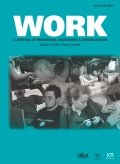
Objective: Research has shown that fixed-split, ergonomic keyboards lessen the pain and functional status in symptomatic individuals as well as reduce the likelihood of developing musculoskeletal disorders in asymptomatic typists over extended use. The goal of this study was to evaluate design features to determine whether the current fixed-split ergonomic keyboard design could be improved. Participants: Thirty-nine, adult-aged, fixed-split ergonomic keyboard users were recruited to participate in one of three studies. Methods: First utilizing non-functional models and later a functional prototype, three studies evaluated keyboard design features including: 1) keyboard lateral inclination, 2) wrist rest height, 3) keyboard slope, and 4) curved "gull-wing" key layouts. Results: The findings indicated that keyboard lateral inclination could be increased from 8° to 14°; wrist rest height could be increased up to 10 mm from current setting; positive, flat, and negative slope settings were equally preferred and facilitated greater postural variation; and participants preferred a new gull-wing key layout. The design changes reduced forearm pronation and wrist extension while not adversely affecting typing performance. Conclusions: This research demonstrated how iterative-evaluative, user-centered research methods can be utilized to improve a product's design such as a fixed-split ergonomic keyboard.
